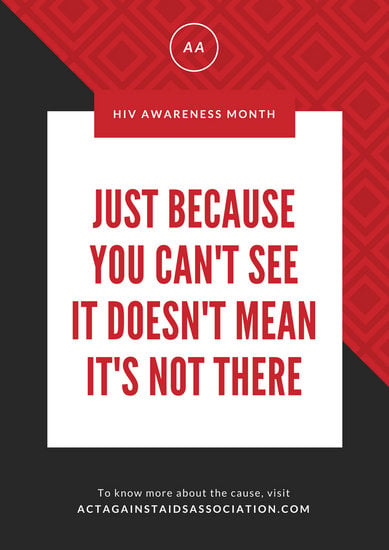
International AIDS Awareness Month

HIV stands for human immunodeficiency virus, which is the virus that causes HIV infection. The abbreviation “HIV” can refer to the virus or to HIV infection.
AIDS stands for acquired immunodeficiency syndrome. AIDS is the most advanced stage of HIV infection.
HIV attacks and destroys the infection-fighting CD4 cells of the immune system. The loss of CD4 cells makes it difficult for the body to fight infections and certain cancers. Without treatment, HIV can gradually destroy the immune system and advance to AIDS.
While great strides have been made in AIDS treatment thanks to massive research efforts, which have reduced overall transmission rates, for young adults, HIV/AIDS still remains one of the most serious health threats. This group, which includes all of the young students around the country, is experiencing the fastest rising rates of HIV infection in comparison to any other age group.
What are the symptoms of HIV/AIDS?
Within 2 to 4 weeks after infection with HIV, some people may have flu-like symptoms, such as fever, chills, or rash. The symptoms may last for a few days to several weeks.
After this earliest stage of HIV infection, HIV continues to multiply but at very low levels. More severe symptoms of HIV infection, such as signs of opportunistic infections, generally don’t appear
for many years. (Opportunistic infections are infections and infection-related cancers that occur more frequently or are more severe in people with weakened immune systems than in people with healthy immune systems.)
Without treatment with HIV medicines, HIV infection usually advances to AIDS in 10 years or longer, though it may advance faster in some people.
HIV transmission is possible at any stage of HIV infection—even if a person with HIV has no symptoms of HIV.
How is AIDS diagnosed?
Symptoms such as fever, weakness, and weight loss may be a sign that a person’s HIV has advanced to AIDS. However, a diagnosis of AIDS is based on the following criteria:
A drop in CD4 count to less than 200 cells/mm3. A CD4 count measures the number of CD4 cells in a sample of blood.
OR
The presence of certain opportunistic infections.
Although an AIDS diagnosis indicates severe damage to the immune system, HIV medicines can still help people at this stage of HIV infection.
To protect yourself against AIDS and other sexually-transmitted diseases, follow these safe practices.
Be safe. Always use condoms or practice abstinence.
Get tested regularly. Most campuses offer anonymous or confidential STD testing, including HIV/AIDS testing.
Talk to your partner about their sexual history and be open about your’s.
Avoid excessive alcohol and drugs, which can impair judgment and lead to unprotected sex.
Don’t share needles, syringes, eyedroppers, or cookers, if you use drugs.
It doesn’t take much to prevent HIV/AIDS, but it also doesn’t take much to contract it. A person living with HIV who takes HIV medicine as prescribed and gets and stays virally suppressed can stay healthy and has effectively no risk of sexually transmitting HIV to HIV-negative partners.
References:
https://aidsinfo.nih.gov/understanding-hiv-aids/fact-sheets/19/45/hiv-aids-the-basics
Submitted by the Health Care Ministry